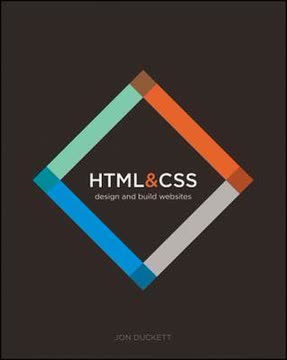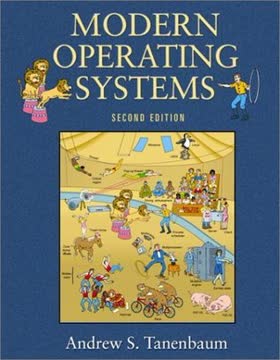Key Takeaways
1. Software engineering ensures reliable, efficient, and maintainable systems
Software engineering is essential for the functioning of government, society, and national and international businesses and institutions. We can't run the modern world without software.
Software permeates modern life. From critical infrastructure to entertainment, software systems control and enable countless aspects of our daily existence. Software engineering principles ensure these systems are developed systematically, resulting in reliable, efficient, and maintainable products. This disciplined approach is crucial for:
- Managing complexity: As software systems grow larger and more interconnected, engineering practices help manage their inherent complexity.
- Ensuring quality: Systematic development processes lead to higher quality software with fewer defects.
- Supporting evolution: Well-engineered software is easier to modify and adapt as requirements change over time.
Challenges persist. Despite advances in software engineering, the field continues to face challenges such as increasing system complexity, rapidly changing requirements, and the need for better security and reliability. Ongoing research and innovation in software engineering practices aim to address these evolving demands.
2. Requirements engineering defines system functionality and constraints
Requirements engineering is the process of understanding and defining what services are required from the system and identifying the constraints on the system's operation and development.
Bridging user needs and system design. Requirements engineering is a critical early phase that translates stakeholder needs into clear, actionable specifications for developers. This process involves:
- Elicitation: Gathering requirements from stakeholders through interviews, surveys, and observation.
- Analysis: Refining and organizing raw requirements, resolving conflicts and ambiguities.
- Specification: Documenting requirements in a clear, verifiable format.
- Validation: Ensuring requirements accurately reflect stakeholder needs and are feasible to implement.
Types of requirements:
- Functional: Specific features and behaviors the system must provide
- Non-functional: Constraints on the system's operation (e.g., performance, security, usability)
- Domain: Requirements derived from the application domain itself
Effective requirements engineering reduces project risks, improves stakeholder satisfaction, and provides a solid foundation for subsequent development phases.
3. System modeling visualizes software structure and behavior
Models are used during the requirements engineering process to help derive the detailed requirements for a system, during the design process to describe the system to engineers implementing the system, and after implementation to document the system's structure and operation.
Abstraction for understanding. System modeling creates visual representations of software structure and behavior, facilitating communication between stakeholders and guiding development. Key modeling techniques include:
- UML (Unified Modeling Language): A standardized set of diagrams for representing various aspects of software systems.
- Common model types:
- Use case diagrams: Show system interactions with external actors
- Class diagrams: Represent the static structure of objects and their relationships
- Sequence diagrams: Illustrate the dynamic flow of interactions between objects
- State diagrams: Depict how objects change state in response to events
Benefits of modeling:
- Improved communication between stakeholders
- Early detection of design flaws and inconsistencies
- Documentation for future maintenance and evolution
- Basis for code generation in model-driven development approaches
Effective modeling strikes a balance between detail and abstraction, providing just enough information to guide development without becoming overly complex or rigid.
4. Architectural design organizes overall system structure
Software architecture is a description of how a software system is organized. Properties of a system such as performance, security, and availability are influenced by the architecture used.
Blueprint for system organization. Architectural design defines the high-level structure of a software system, identifying major components and their relationships. This crucial phase influences:
- System quality attributes: Performance, security, scalability, maintainability
- Development process: Guiding implementation and integration strategies
- System evolution: Facilitating future changes and enhancements
Common architectural patterns:
- Layered architecture: Organizes system into hierarchical layers of functionality
- Client-server: Separates functionality between service providers (servers) and consumers (clients)
- Microservices: Decomposes system into small, independent services
- Event-driven: Structures system around the production, detection, and handling of events
Selecting the appropriate architecture involves considering factors such as system requirements, development team expertise, and organizational constraints. A well-designed architecture provides a solid foundation for meeting both functional and non-functional requirements.
5. Design and implementation transform requirements into executable code
Software design and implementation is the stage in the software engineering process at which an executable software system is developed.
Bridging concept to reality. Design and implementation transform abstract requirements and architectural plans into concrete, executable software. This phase involves:
- Detailed design: Specifying the internal structure of system components
- Coding: Writing actual program code in chosen programming languages
- Unit testing: Verifying the correctness of individual components
Key considerations:
- Design patterns: Reusable solutions to common design problems
- Code reuse: Leveraging existing libraries and frameworks
- Coding standards: Ensuring consistency and maintainability
- Development tools: IDEs, version control systems, and build automation
Agile vs. plan-driven approaches:
- Agile: Emphasizes flexibility, iterative development, and close collaboration with customers
- Plan-driven: Follows a more structured, sequential process with detailed upfront planning
The choice of approach depends on factors such as project size, criticality, and team dynamics. Many projects use a hybrid approach, combining elements of both agile and plan-driven methods.
6. Software testing verifies functionality and uncovers defects
Testing is intended to show that a program does what it is intended to do and to discover program defects before it is put into use.
Quality assurance through verification. Software testing is a critical phase that ensures the developed system meets its requirements and functions correctly. Key aspects of testing include:
-
Levels of testing:
- Unit testing: Verifying individual components
- Integration testing: Checking interactions between components
- System testing: Validating the entire system against requirements
- Acceptance testing: Confirming the system meets user needs
-
Testing approaches:
- Black-box testing: Focusing on inputs and outputs without knowledge of internal structure
- White-box testing: Examining internal logic and code paths
- Regression testing: Ensuring new changes don't break existing functionality
Test-driven development (TDD): A practice where tests are written before code, guiding implementation and ensuring comprehensive test coverage.
Effective testing strategies balance thoroughness with time and resource constraints. Automated testing tools and continuous integration practices help streamline the testing process, especially for large and complex systems.
7. Agile methods emphasize flexibility and customer collaboration
Agile methods are iterative development methods that focus on reducing process overheads and documentation and on incremental software delivery. They involve customer representatives directly in the development process.
Adapting to change. Agile methodologies prioritize flexibility, rapid delivery, and close customer collaboration. Key principles include:
- Iterative development: Delivering working software in short cycles (sprints)
- Continuous feedback: Regular customer input and adaptation
- Self-organizing teams: Empowering developers to make decisions
- Minimal documentation: Focusing on working software over comprehensive documentation
Popular agile frameworks:
- Scrum: Defines specific roles, ceremonies, and artifacts for managing development
- Extreme Programming (XP): Emphasizes technical practices like pair programming and test-driven development
- Kanban: Focuses on visualizing workflow and limiting work in progress
Benefits of agile:
- Faster time-to-market
- Improved ability to handle changing requirements
- Higher customer satisfaction through regular feedback and delivery
While agile methods have gained widespread adoption, they may not be suitable for all projects, particularly those with strict regulatory requirements or fixed contracts. Many organizations adopt a hybrid approach, combining agile practices with more traditional project management techniques.
8. Configuration management tracks changes and maintains consistency
Configuration management is the name given to the general process of managing a changing software system.
Controlling evolution. Configuration management (CM) is essential for tracking changes, maintaining consistency, and coordinating work in software development projects. Key aspects of CM include:
- Version control: Tracking changes to code and documents over time
- Build management: Automating the process of compiling and assembling software
- Release management: Coordinating the delivery of software versions
- Change control: Managing and approving proposed modifications
Tools and practices:
- Version control systems: Git, Subversion
- Continuous integration/continuous delivery (CI/CD) pipelines
- Automated build and deployment tools
- Issue tracking systems
Benefits of effective CM:
- Reduced risk of conflicts and lost work
- Improved collaboration among team members
- Ability to roll back to previous versions if needed
- Facilitation of parallel development efforts
Configuration management becomes increasingly critical as projects grow in size and complexity. It provides the foundation for coordinating work across large teams and managing the evolution of software systems over time.
Last updated:
FAQ
What's Software Engineering by Ian Sommerville about?
- Comprehensive Exploration: Software Engineering by Ian Sommerville provides an in-depth look at software engineering principles, practices, and methodologies. It covers the entire software development lifecycle, from requirements gathering to maintenance.
- Real-World Application: The book emphasizes practical application in the industry, blending methodologies like agile and plan-driven approaches to equip readers with the knowledge to tackle real-world software challenges.
- Modern Challenges: It addresses contemporary issues such as managing complexity, ensuring security, and integrating agile methods with traditional practices, highlighting the importance of software engineering in addressing societal challenges.
Why should I read Software Engineering by Ian Sommerville?
- Educational Resource: Ideal for students and professionals, the book provides foundational knowledge and advanced topics, serving as a comprehensive textbook for both introductory and advanced courses.
- Industry Relevance: It updates software engineers on essential topics like software reuse, architectural design, and security, reflecting current trends and practices in software development.
- Practical Insights: Includes case studies and examples that illustrate key concepts, making complex topics easier to understand, along with supplementary materials like videos and online resources.
What are the key takeaways of Software Engineering by Ian Sommerville?
- Requirements Engineering: Emphasizes the critical role of requirements engineering in software development, highlighting the need for clear and precise requirements to avoid costly rework.
- Agile vs. Plan-Driven: Discusses the differences between agile and plan-driven methodologies, crucial for selecting the right approach for a project.
- Software Evolution: Underscores the need for software to adapt to changing requirements and environments, reflecting the ongoing need for flexibility in software systems.
What are the best quotes from Software Engineering by Ian Sommerville and what do they mean?
- Comprehensive Discipline: "Software engineering is an engineering discipline that is concerned with all aspects of software production." This quote emphasizes that software engineering involves not just coding but also planning, design, and maintenance.
- Uncertainty in Development: "Requirements change because customers find it impossible to predict how a system will affect working practices." This highlights the inherent uncertainty in software development, stressing the need for flexibility in requirements management.
- Structured Methodologies: "The systematic approach that is used in software engineering is sometimes called a software process." This points to the structured methodologies that guide software development, reinforcing the importance of having a defined process.
How does Software Engineering by Ian Sommerville address the challenges of software projects?
- Managing Complexity: Discusses strategies for managing the increasing complexity of software systems, emphasizing effective requirements engineering and design practices.
- Integrating Agility: Explores how to integrate agile methods with traditional approaches, crucial for adapting to changing project demands.
- Security and Dependability: Underscores the importance of security and reliability in software systems, providing guidelines for incorporating these aspects into the development lifecycle.
What is the significance of risk management in Software Engineering by Ian Sommerville?
- Identifying Risks: Involves identifying potential risks that could impact project success, such as technical challenges or resource availability, to mitigate issues before they escalate.
- Analyzing Risks: Emphasizes analyzing the likelihood and impact of identified risks, allowing project managers to prioritize which risks to address first.
- Planning for Risks: Includes developing strategies to avoid or minimize the impact of risks, ensuring that the project remains on track and within budget.
What is the role of testing in Software Engineering by Ian Sommerville?
- Validation and Defect Discovery: Testing is crucial for validating that software meets its requirements and for discovering defects before deployment.
- Types of Testing: Outlines different testing stages, including unit testing, component testing, system testing, and user testing, each serving a specific purpose.
- Test-Driven Development: Emphasizes TDD as a methodology where tests are written before code, promoting better design and ensuring that all code is tested.
How does Software Engineering by Ian Sommerville define software quality?
- Quality Attributes: Defines software quality in terms of attributes like reliability, maintainability, usability, and performance, essential for meeting user expectations.
- Subjective Assessment: Notes that assessing software quality can be subjective, relying on user experience and feedback, highlighting the importance of involving users.
- Quality Management Processes: Discusses processes involved in managing software quality, including quality assurance and quality control, vital for maintaining high standards.
What is software reengineering as discussed in Software Engineering by Ian Sommerville?
- Definition: Involves restructuring and redocumenting existing software to improve its understandability and maintainability without altering its functionality.
- Advantages: Can reduce costs and risks associated with replacing outdated systems, allowing organizations to modernize software while retaining valuable business logic.
- Process Steps: May include source code translation, reverse engineering, program structure improvement, and data reengineering, enhancing maintainability and adaptability.
How does Software Engineering by Ian Sommerville address agile methodologies?
- Agile Principles: Discusses core principles of agile methodologies, emphasizing flexibility, customer collaboration, and iterative development.
- Continuous Integration: Highlights the importance of continuous integration, where code changes are frequently merged and tested, improving software quality.
- Customer Involvement: Prioritizes customer feedback and involvement throughout the development process, leading to better alignment between software and user needs.
What is the significance of configuration management in Software Engineering by Ian Sommerville?
- Managing Changes: Crucial for tracking changes in software systems, ensuring that all modifications are documented and controlled to prevent confusion and errors.
- Version Control: Details how version control systems help manage different versions of software components, essential for team collaboration.
- Release Management: Encompasses release management, preparing software for distribution to customers, ensuring all necessary components and documentation are included.
What are functional and non-functional requirements in Software Engineering by Ian Sommerville?
- Functional Requirements: Specify what the system should do, detailing the services it must provide and how it should respond to inputs, guiding system feature development.
- Non-Functional Requirements: Impose constraints on the system's operation, such as performance, security, and usability, critical for meeting quality standards.
- Interrelation of Requirements: Notes that non-functional requirements often conflict and interact with other requirements, necessitating careful management and prioritization.
Review Summary
Software Engineering by Ian Sommerville receives mixed reviews, with an average rating of 3.77 out of 5. Many readers find it comprehensive and valuable for understanding software engineering concepts, particularly for managers and students. Some praise its logical structure and thorough coverage of topics. However, critics note that it can be dry and academic, with some content becoming outdated quickly. Several reviewers mention its usefulness as a reference book, while others find it less practical for working developers. Overall, it's considered an important textbook in the field, despite its limitations.
Similar Books










Download PDF
Download EPUB
.epub digital book format is ideal for reading ebooks on phones, tablets, and e-readers.




